Spirometra is a genus of pseudophyllid cestodes that reproduce in canines and felines, but can also cause pathology in humans if infected. As an adult, this tapeworm lives in the small intestine of its definitive host and produces eggs that pass with the animal's feces. When the eggs reach water, the eggs hatch into coracidia which are eaten by copepods. The copepods are eaten by a second intermediate host to continue the life cycle. Humans can become infected if they accidentally eat frog legs or fish with the plerocercoid stage encysted in the muscle. In humans, an infection of Spirometra is termed sparganosis.

Cineraria is a genus of flowering plants in the sunflower family, native primarily to southern Africa with a few species farther north. The genus includes herbaceous plants and small subshrubs.
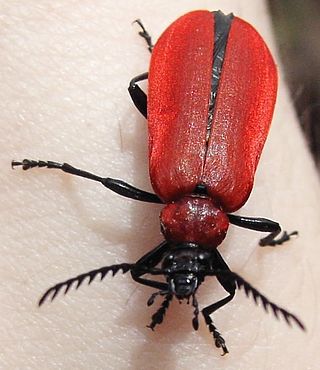
Fire-coloured beetles is the common name for members of the tenebrionoid family Pyrochroidae. The family is found worldwide, and is most diverse at temperate latitudes. Adults measure 2–20 millimetres (0.079–0.787 in); larvae reach 35 millimetres (1.4 in). Larvae of Pyrochroinae are found associated with the bark of dead trees. They are probably mostly fungivorous, although they may become cannibalistic if too crowded.

Jadera is a genus of true bugs in the soapberry bug subfamily. Members of this genus are only found in the Americas.

Colubrina is a genus of about 30 species of flowering plants in the family Rhamnaceae, native to warm temperate to tropical regions of Africa, the Americas, southern Asia, northern Australia, and the Indian Ocean islands.

Trillium decipiens, also known as Chattahoochee River wakerobin or deceiving trillium, is a spring-flowering perennial plant. It occurs mostly near the Chattahoochee River in Alabama, Florida and Georgia. Scattered populations are found elsewhere in these three states, all within the Atlantic Coastal Plain or Gulf Coastal Plain. Rich deciduous woods of bluffs, ravines, and alluvial land provide its most favored habitat.
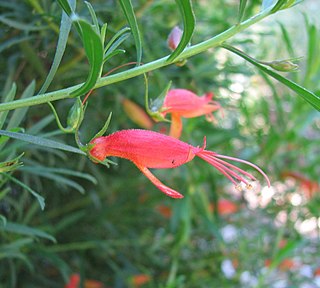
Eremophila decipiens, commonly known as slender fuchsia bush or narrow-leaved fuchsia bush is a flowering plant in the figwort family, Scrophulariaceae and is endemic to an area extending from the south-west of Western Australia to southern parts of South Australia. It is low, sprawling shrub with lance-shaped leaves and red, orange or yellow flowers on a long, S-shaped stalk.

Acacia truncata, commonly known as the angle leaved wattle or west coast wattle, is a coastal shrub in the family Fabaceae, with a native distribution along the southwest coast of Western Australia. A specimen of this wattle was part of an early European botanical collection, perhaps the first from Australia.

Barameda is a genus of rhizodont lobe-finned fishes which lived during the Tournaisian stage near the start of the Carboniferous period in Australia; fossils of the genus have been reported from the Snowy Plains Formation. The largest member of this genus, Barameda decipiens, reached an estimated length of around 3–4 metres (9.8–13.1 ft), while the smallest species, B. mitchelli is estimated to have had a length of about 35 centimetres (14 in).
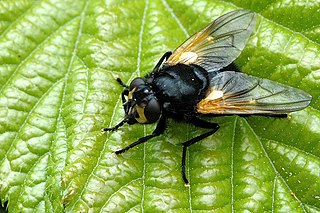
Mesembrina is a genus from the fly family Muscidae.
Moodnopsis decipiens is a species of snout moth, and the type species in the genus Moodnopsis. It was described by Harrison Gray Dyar Jr. in 1914. It is found in Mexico.
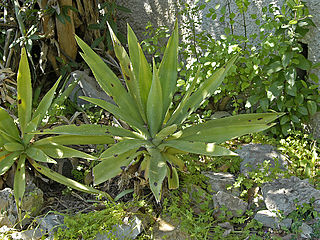
Agave decipiens, common names false Sisal or Florida agave, is a plant species endemic to coastal Florida in the United States.

Acmaeodera decipiens is a species of metallic wood-boring beetle in the family Buprestidae. It is found in Central America and North America.

Macroglenes is a genus of chalcidoid wasps in the family Pirenidae. There are at least 20 described species in Macroglenes.
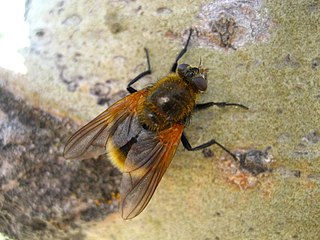
Mesembrina decipiens is a species of house flies, etc. in the family Muscidae. There are two recognised synonyms, Mesembrina putziloi Portschinsky, 1873 and Hyperdermodes solitaria Knab, 1914 per Kutchta & Savage (2008).
Anthonomus decipiens is a species of true weevil in the beetle family Curculionidae. It is found in North America.
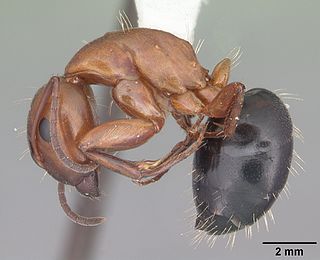
Camponotus decipiens is a species of carpenter ant native to the eastern United States, North Dakota, Nebraska, Kansas, Colorado, Texas, Tamaulipas, Nuevo Leon, San Luis Potosi, and possibly Utah, Arizona, Sonora, and California. The specific epithet of the scientific name, decipiens, comes from Latin "dēcipiens", meaning "decieving, cheating, or trapping".
Pyropyga decipiens is a species of firefly in the beetle family Lampyridae. It is found in North America.
Synneuron is a genus of gnats, gall midges, and March flies in the family Canthyloscelidae. There are at least four described species in Synneuron.
Arisaema decipiens is a species of Arisaema found in Guangxi, Guizhou, Hunan, Sichuan, Xizang, Yunnan provinces of China, India, Myanmar, and Vietnam growing in evergreen forest at elevations of 600–1600 meters.














